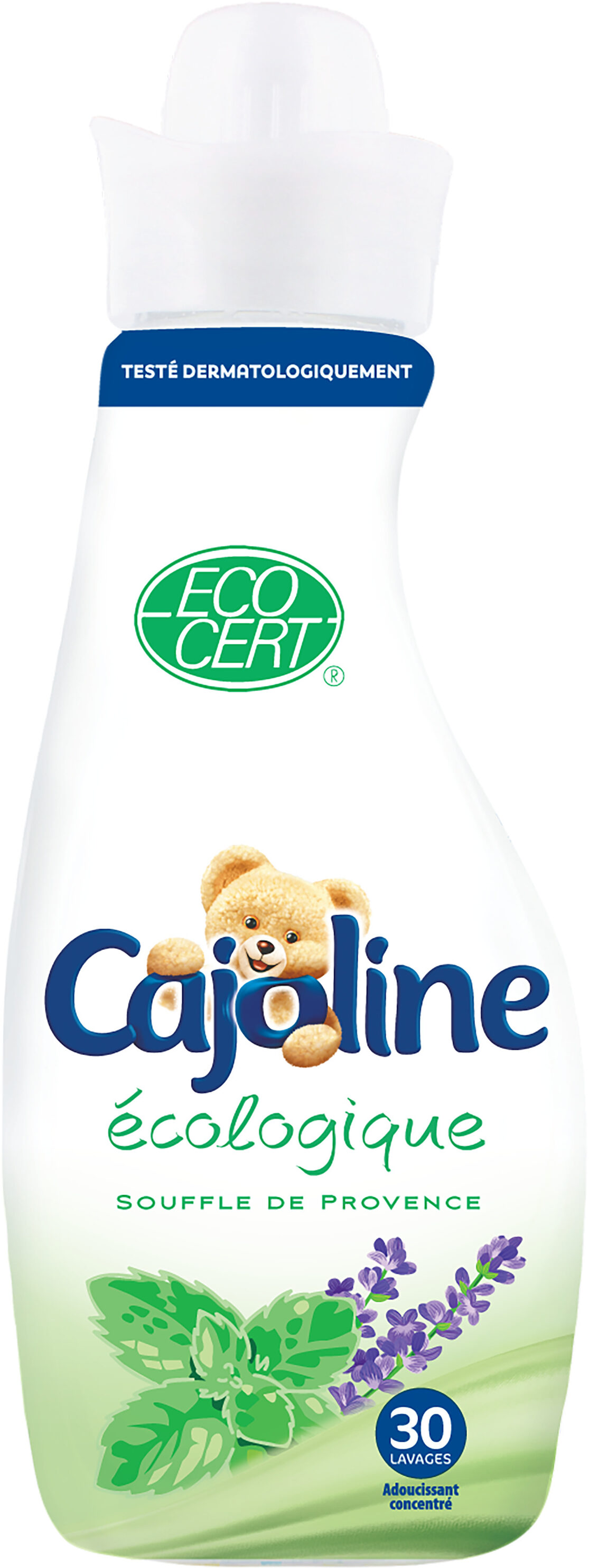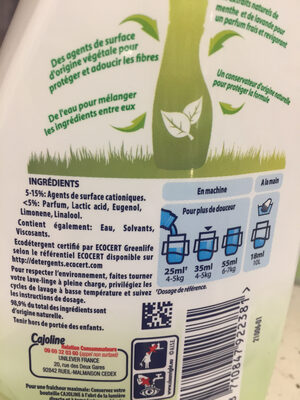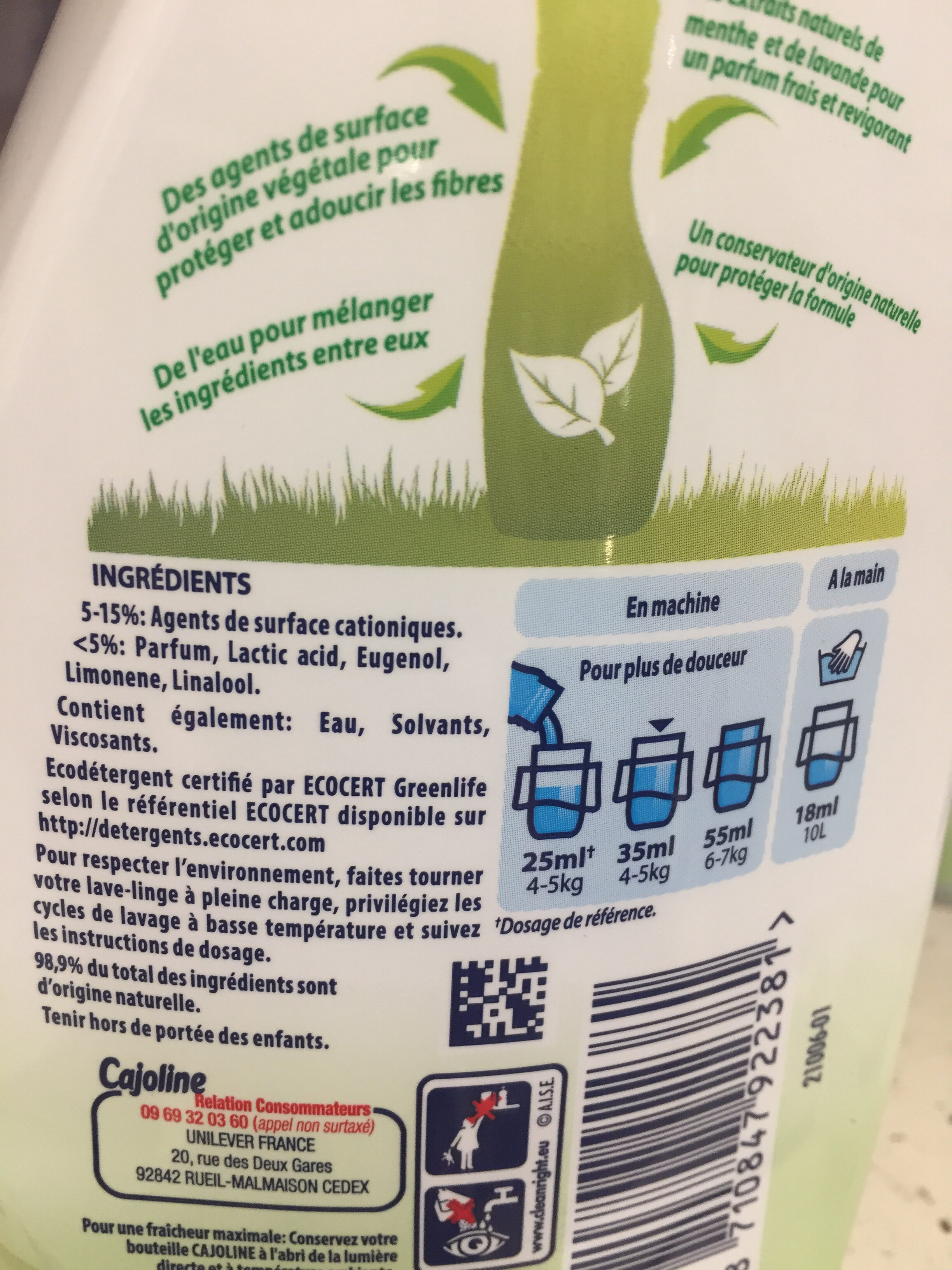CAJOLINE Ecologique Assouplissant Liquide Souffle de Provence 750ml -30 Lavages - 750 ml
This product page is not complete. You can help to complete it by editing it and adding more data from the photos we have, or by taking more photos using the app for Android or iPhone/iPad. Thank you!
×
Some of the data for this product has been provided directly by the manufacturer Unilever France.
Barcode: 8710847922381 (EAN / EAN-13)
Common name: Assouplissant Concentré
Quantity: 750 ml
Packaging: Bottle, fr:Bouchon en plastique
Brands: Cajoline
Categories: Non food products
Labels, certifications, awards:
Certified by Ecocert, EU Ecolabel, Green Dot, No colorings, Triman, fr:AISE, fr:ECOCERT_ORGANIC


Origin of the product and/or its ingredients: Allemagne
Countries where sold: France
Matching with your preferences
Environment
Packaging
Transportation
Other information
Preparation: Chaque flacon de Cajoline est doté d'un petit bouchon doseur. Versez l'adoucissant dans le bouchon en suivant les instructions sur le flacon. Versez Cajoline dans le bac à produit de votre lave-linge (vérifiez dans le mode d'emploi car son emplacement peut varier d'une marque à l'autre), choisissez votre programme de lavage... et laissez votre machine agir ! Pour respecter l'environnement, faites tourner votre lave-linge à pleine charge, privilégiez les cycles de lavage à basse température et suivez les instructions de dosage. 95% du total des ingrédients sont d'origine naturelle.
Conservation conditions: TENIR HORS DE PORTEE DES ENFANTS. A conserver à l'abri de la lumière directe et à température ambiante.Eviter le contact avec les yeux. Après contact avec es yeux, rincer abondamment avec de l'eau.
Customer service: Cajoline Relation Consommateurs, Unilever France, 20 rue des Deux Gares 92842 Rueil-Malmaison Cedex
Report a problem
Data sources
The manufacturer Unilever France uses Equadis to automatically transmit data and photos for its products.
Product added on by openfoodfacts-contributors
Last edit of product page on by mariacastiel.
Product page also edited by itsjustruby, org-unilever-france-gms, packbot, roboto-app.





